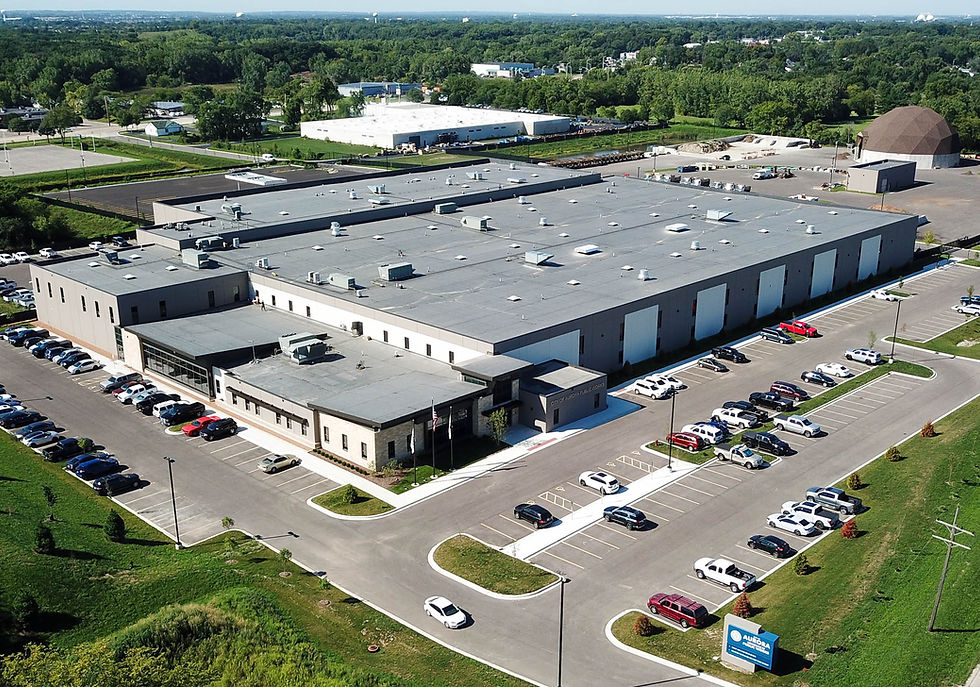Optimizing Design and Efficiency: Precast Concrete Benefits for Architects
- Dukane Precast
- Dec 12, 2023
- 2 min read

Architecture continually evolves, and precast concrete stands as a game-changer for architects. It offers unparalleled advantages, from time and cost efficiency to design flexibility, quality control, sustainability, and more.
Introduction to Precast Concrete
Precast concrete, manufactured off-site, revolutionizes architectural design and construction. Architects utilize it for its efficiency, design potential, and durability, transforming concepts into structures efficiently.
Advantages of Using Precast for Architects
A. Time Efficiency
Faster Construction Timelines: Precast elements expedite building processes.
Modules are ready-made, minimizing on-site assembly time.
Assembly tasks are minimized, enhancing productivity.
Reduced construction phases lead to quicker project turnovers.
B. Cost Effectiveness
Lower Overall Project Costs: Reduced labor and faster timelines translate to cost savings.
Precast minimizes expenses related to delays or extended labor requirements.
Cost savings from reduced on-site management and supervision.
Enhances cost-effectiveness through optimized resource utilization.
C. Design Flexibility
Customization Possibilities: Precast allows tailored designs to meet unique project requirements.
Custom molds enable the creation of bespoke elements.
Mimicking various materials, enhancing aesthetic options.
Facilitates innovative and complex structures.
D. Quality Control and Durability
Consistency in Production: Precast ensures uniform quality across elements.
Controlled manufacturing processes enhance reliability.
Resistance to weathering and wear, increasing longevity.
Long-term performance, reducing maintenance needs.
E. Sustainability Benefits
Environmental Impact Reduction: Precast reduces environmental footprints.
Lower carbon emissions compared to traditional construction methods.
Contributing to sustainable building practices.
Promotes sustainable life cycles and minimizes waste.
How Architects Can Utilize Precast Concrete
Architects can optimize the benefits of precast concrete through strategic integration and collaboration:
A. Collaboration with Precast Manufacturers
Early Involvement: Engage with precast manufacturers during the design phase for optimal results.
Detailed Design Discussions: Work closely on design intricacies, ensuring precast elements align with the architectural vision.
Material Selection Guidance: Seek expertise in selecting materials that align with both design goals and functionality.
B. Integration of Precast in Design Concepts
Incorporating Precast Elements: Integrate precast elements into architectural plans from the project's outset.
Utilizing Precast for Architectural Features: Implement precast for specific features to enhance functionality and aesthetics.
Balancing Aesthetics and Functionality: Ensure precast aligns with both design aesthetics and practicality.
C. Quality Assurance during Construction
On-site Inspection and Coordination: Regularly inspect and coordinate installation for precision.
Proper Installation: Oversee correct installation to maintain structural integrity.
Addressing Potential Challenges Proactively: Anticipate and resolve issues swiftly for seamless progress.
D. Incorporating Sustainable Practices
Eco-friendly Materials: Opt for environmentally conscious materials in precast designs.
Designing for Energy Efficiency: Leverage precast's properties for enhanced energy efficiency.
Promoting Recyclability: Advocate for recyclability in precast projects to reduce environmental impact.
The strategic utilization of precast concrete empowers architects to optimize project outcomes, achieve design aspirations, and promote sustainability.





Comments